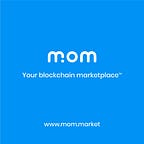Multiven Open Marketplace — MOM, for Consumers
Believe it or not, E-commerce began with…Sting
The e-commerce world is as fascinating as it is unfathomable. Some apocryphal tales say that the first-ever shopping transaction over the internet occurred on August 11, 1994, when an entrepreneurial 21-year-old kid by the name of Dan Kohn sold a copy of Sting’s Ten Summoner’s Tales CD via his own website, NetMarket. The buyer, a friend of Kohn’s, used his credit card to securely pay a grand total of $12.48 (plus shipping costs), via a Unix-based PGP-encrypted, browser. NetMarket remains online today, by the way, though customers are no longer restricted to using Unix!
Now, whether or not the Sting CD transaction was the actual first instance of e-commerce is debatable, but the important fact is that online shopping had become a reality that has grown into a multi-Billion dollar business. According to the Digital Commerce website, US consumers spent a whopping $517bn in online shopping with US-based merchants during 2018, which marked a 15% increase on the previous year. E-commerce is Big (yes, with a capital B) business indeed.
E-commerce from the Consumer’s Perspective
Shopping online is relatively easy for people living in developed countries, as the wealth and the infrastructure exist to make it possible. But there are still large areas of the world where online shopping is virtually unheard of, and otherwise impossible. Here’s why.
Barriers to access e-commerce include lack of Internet infrastructure, poor socio-economic conditions, and often, the inability to open a bank account, either due to poor credit or many other reasons. An estimated 1.7 Billion people worldwide are considered ‘unbanked’, yet a vast majority of them own or have access to a mobile phone, which would theoretically enable them to participate in e-commerce. So why can’t they? The short answer is because of banks, or more precisely, the lack thereof.
If you’re unable to open a bank account, you cannot have a credit card, nor can you get access to online payment facilities. And without either of these things, you cannot shop online. It’s that simple.
The obstinacy and die-hard determination that banks and financial institutions display to monopolize commerce are notable, and otherwise obsolete. Banks have kept a tight, centralized control over financial transactions for far too long, but the time of reckoning is upon them.
Cryptocurrencies have emerged as a solid contender to overthrow the bank’s historic centralized monopoly.
And one name stands out from the crowd: The Multiven Open Marketplace (MOM).
Shopping on the MOM: A P2P Nirvana
Traditional online shopping outlets such as Amazon do offer a great variety of items, yes. They’re convenient, and always willing to sell you what you want. But you still need a credit card to buy stuff there.
The situation gets even worse with online merchants dealing in second-hand items. How do you know that the product in question is legit, and not a counterfeit? Even big names like Amazon, Walmart, and Sears have been known to sell counterfeit stuff.
Now, buying a fake book might not be a good thing, but it’s just an annoyance with limited risk attached to it. Imagine buying a counterfeit phone charger or any other electrical item, however. Poorly crafted chargers have been known to cause fires, sometimes with devastating consequences.
Determining provenance and the legitimacy of an item is essential for safety and peace of mind, yet, traditional online shopping outlets cannot fully guarantee either.
MOM stands for excellence from the consumer’s perspective. The marketplace represents a Peer-to-Peer (P2P) decentralized opportunity to enjoy online shopping without any of the risks or issues explained above. No need for credit card information, for instance, nor is there a need to have a ‘central’ entity (bank) managing the whole thing (no middle-man fees).
With MOM, all you need is a browser, the Metamask extension, a small amount of Ether, and MultiCoin (MTCN), all powered by a secure blockchain engine. All those unbanked customers can now access e-commerce from their smart devices without the need to beg for a bank account.
Conclusion
MOM offers a two-pronged revolution: One, centralized entities are completely removed from the equation (thus eliminating exclusion, costly fees and awkward restrictions), and two, it enables the billions of people who would have traditionally been unable to make online purchases to benefit from the convenience of e-commerce, thus opening up a whole new array of potential markets and opportunities.
The MOM’s P2P nature keeps things personal and transparent, as the blockchain acts as an impartial witness and watchdog for all commercial activities.
— Fernando Sanchez
